Soochow University is located in Suzhou, a famous historical and cultural city known as the "Paradise on Earth". It is one of the first batch of universities included in the national "211 Project" and "2011 Plan". It is a "double first-class" construction university jointly built by the Ministry of Education and the People's Government of Jiangsu Province. It is a key comprehensive university in Jiangsu Province and is jointly built by the National Space Administration and the National Space Administration. Soochow University, formerly known as Soochow University (founded in 1900), pioneered modern higher education and integrated the essence of Chinese and Western cultures. It was the earliest university in China organized with a modern university discipline system. In the history of Chinese higher education, Soochow University was the first to launch postgraduate education and grant master's degrees, the first to launch professional education in law (British and American law), and the first to establish a journal. In 1952, during the restructuring of colleges and departments in mainland China, the College of Arts and Sciences of Soochow University, the Sunan College of Culture and Education, and the Department of Mathematics and Physics of Jiangnan University merged to form Sunan Normal University. In the same year, it was renamed Jiangsu Normal University. In 1982, the school was renamed Soochow University. Later, Suzhou Sericulture College (1995), Suzhou Institute of Silk Technology (1997) and Suzhou Medical College (2000) were merged into Soochow University. From the bright stars in the Republic of China to the pioneering and innovative in the Republic era; from the persistence of the cultural context of teacher education to the strategic transformation and return of comprehensive universities; from the leapfrog development of multi-school mergers to the striving for first-class reshaping of glory, Suzhou The university has left a mark in the history of higher education in China. For more than a century, successive generations of SU students have always adhered to the school motto of “nurturing the righteousness of the world and the world, and perfecting people through the past and present”, adhering to the supremacy of academics and applying what they have learned, advocating freedom and openness, inclusiveness, and the pursuit of excellence, and persisting in learning erudition and practicing sincerely. We are committed to cultivating model citizens with "free spirit, outstanding ability, independent personality and social responsibility". In the long-term process of running the school, we have provided more than 500,000 professional talents of various types to the society, including Xu Deheng, A large number of elite pillars and celebrities such as Zhou Gucheng, Fei Xiaotong, Lei Jieqiong, Sun Qimeng, Zhao Puchu, Qian Weichang, Dong Yinchu, Li Zhengdao, Ni Zhengri'ao (yù), Zheng Pijiang, Yang Tieliang, Cha Liangyong (Jin Yong); More than 50 academicians of the two academies, including Tan Jiazhen, Chen Ziyuan, Yu Mingfang, Song Daxiang, and Zhan Qimin, have made important contributions to national construction and social development. Soochow University currently has thirteen major disciplines including philosophy, economics, law, education, literature, history, science, engineering, agriculture, medicine, management, art, and interdisciplinary subjects. The school has 37 colleges (departments), with 27,876 full-time undergraduate students, 14,183 master's students, 1,958 doctoral students, and 1,271 international students. The school currently offers 132 undergraduate majors, 47 first-level discipline master's degree programs, 35 professional degree master's degree programs; 31 first-level discipline doctoral programs, 1 professional degree doctoral program, and 30 postdoctoral mobile stations; the school currently has 1 national First-class disciplines, 4 national key disciplines, 22 advantageous disciplines in Jiangsu universities, and 6 key disciplines in Jiangsu Province during the “14th Five-Year Plan”. Up to now, the school’s chemistry, materials science, clinical medicine, physics, engineering, biology and biochemistry, pharmacology and toxicology, neuroscience and behavior, molecular biology and genetics, immunology, mathematics, computer science, A total of 19 disciplines including agricultural sciences, environmental sciences and ecology, general social sciences, comprehensive interdisciplinary subjects, psychiatry and psychology, microbiology, botany and zoology have entered the top 1% of the global basic science indicators (ESI). Among them, chemistry Five disciplines, including materials science, clinical medicine, pharmacology and toxicology, and engineering, have entered the top 1‰ of the global Essential Science Index (ESI). The school currently has 2 national-level talent training bases, 3 national-level experimental teaching demonstration centers, 1 national-level virtual simulation experimental teaching demonstration center, 2 national-level talent training model innovation experimental areas, and 1 national-level off-campus practical teaching for college students. base. 1 National 2011 Collaborative Innovation Center (lead unit), 1 national key laboratory jointly built by the province and the ministry, 1 national engineering laboratory, 2 national and local joint engineering laboratories, 2 national-level international cooperation joint research centers, 1 National Clinical Medical Research Center, 1 National “One Belt and One Road” Joint Laboratory, 3 National Public Service Platforms, 1 National University Science and Technology Park (National Science and Technology Business Incubator), 2 Ministry of Education Key Laboratories, 2 Engineering Research Center of the Ministry of Education, 4 collaborative innovation centers of Jiangsu universities, 24 key provincial and ministerial philosophy research bases, 36 provincial and ministerial key laboratories, 8 provincial and ministerial public service platforms, 12 provincial and ministerial engineering research centers center. The school currently has 6,034 faculty members and 3,518 full-time teachers, including 1 Nobel Prize winner, 10 academicians of the two academies, 13 academicians from developed countries, 39 National Outstanding Youth Fund winners, and 46 National Outstanding Youth Fund winners. The recipients include 16 leading talents from the "Ten Thousand Talents Plan", 9 top young talents from the "Ten Thousand Talents Plan" and other national-level talents of more than 350 people. A strong, well-structured and dynamic talent team has been initially formed. Soochow University regards talent cultivation as the central task of the school. It is based on cultivating people with moral integrity. It is positioned to cultivate outstanding talents with a sense of responsibility, innovation, application and internationality. It is guided by the integration of general education and professional education. Focusing on improving students' comprehensive quality, consolidating professional foundation, and cultivating innovation and entrepreneurship capabilities, we will actively deepen the systematic reform of talent training and continuously improve the quality of talent training. The School of Nanoscience and Technology of the school was listed as one of the first 17 national pilot colleges in the country and became a special zone for the reform of the higher education system and mechanism; the school has established 3 academies to actively explore new models of talent training, among which Jingwen College is positioned outside of professional education As the "second classroom", Tang Wenzhi Academy carries out liberal arts education in the "first classroom", and Ziqing Academy is committed to creating a testing ground for top innovative talents in "new engineering". The school has been approved as 42 national-level first-class undergraduate major construction sites and 10 provincial-level first-class undergraduate major construction sites. 42 courses have been approved as national-level first-class undergraduate courses; 41 courses have been recognized as provincial-level first-class undergraduate courses. In recent years, Soochow University students have won more than 700 national awards every year, and have repeatedly won prizes in various domestic and foreign competitions such as the National Challenge Cup and the Olympic Games. Master students at the school have published papers in "Nature" as the first author. Relevant results were selected into the "Top Ten Progress in China's Optics in 2018". The school implements the "standing up to the sky" scientific and technological innovation strategy, and has achieved fruitful results in scientific research and innovation work. In 2022, in the field of humanities and social sciences, 49 projects were approved by the National Social Science Fund; among them, 5 art projects were awarded, ranking second among universities in the country; and 17 later-stage funded projects were awarded, ranking fifth in the country. The Ministry of Education has approved 22 general projects for humanities and social science research, ranking 11th among universities nationwide and 1st in the province. Won 46 Jiangsu Province Social Science Outstanding Achievements Awards. The “Social Science Communication and Application Base” was approved as a social science popularization base for colleges and universities in Jiangsu Province, and the “Soochow University Soochow Sports Think Tank” was selected as a high-end think tank by the State Sports General Administration."Jiangsu Province Local Legislation Research Base" is located in our school. The decision-making consultation results were published or commented on 125 times at the provincial and ministerial level or above, including 9 affirmative comments from national leaders. In the field of natural sciences, 341 National Natural Science Foundation projects (including outstanding youth (overseas)) were approved, 13 key special projects of the National Key R&D Program, and 1 major national defense project; won the second prize of the 2020 National Science and Technology Progress Award 1 1 project, 1 International Science and Technology Cooperation Award of the People's Republic of China in 2020 (first cooperative unit), 1 China Youth Science and Technology Award in 2022, ranked 44th among universities in the world and 44th among universities nationwide in the latest Nature Index in 2022 14th; 26 people were selected as "Global Highly Cited Scientists" in 2022, ranking 5th among universities nationwide. In 2022, 6,605 papers will be published in the three major search papers, including 4,237 papers included in SCIE, ranking 25th among universities in the country; 1,583 intellectual property rights will be authorized, including 994 domestic invention patent authorizations and 61 international patent authorizations, realizing intellectual property transfer and licensed use of 210 pieces. In addition, Soochow University was selected into the first batch of pilot projects for the construction of specialized national technology transfer institutions for universities by the Ministry of Science and Technology and the Ministry of Education. In accordance with the development idea of "leading domestic first-class students through international reputation", the school comprehensively and deeply promotes the process of internationalization of education. The school has established inter-school exchange relationships with more than 200 universities and research institutions in more than 30 countries (regions), and has more than 1,000 international students from all over the world in China. In 2010, it was selected into the Ministry of Education’s “China-Africa Universities 20+20 Cooperation Plan” to assist in the construction of the University of Lagos in Nigeria; in 2011, it successfully established China’s first overseas university in Laos – “Laos Suzhou University”, which is now It has become an important station and cultural business card in the country's "Belt and Road" initiative; in 2018, the school initiated the establishment of the China-ASEAN Medical Education University Alliance to build a China-ASEAN community of healthy destiny and promote the construction of the "Belt and Road"; in 2019, the world's first The National Red Cross International College was established to help build a community with a shared future for mankind; in 2020, the school was approved to establish the China-Portugal Cultural Heritage Protection Science “Belt and Road” Joint Laboratory. Soochow University currently has four campuses: Tiancizhuang Campus, Dushu Lake Campus, Yangcheng Lake Campus, and Future Campus, covering an area of 4,586 acres and a construction area of more than 1.66 million square meters. The school has rich library materials, with a collection of more than 5 million books; it has a rich Chinese and foreign language database resources include more than 2.15 million electronic books, more than 1.92 million electronic journals, and more than 12.25 million electronic theses. The school sponsors three journals: "Journal of Soochow University", philosophy and social sciences edition, education science edition and law edition, as well as "Journal of Algebra", "Modern Silk Science and Technology", "Chinese Hemorrheology" and "Language and Semiotics Research" 》 and other professional academic journals. Among them, "Journal of Soochow University (Philosophy and Social Sciences Edition)" has published articles that have been reprinted and excerpted by authoritative secondary documents such as "Xinhua Digest" and "Renmin University Reprinted Newspapers and Periodicals Materials" in recent years. Its reprint volume has always ranked among the top comprehensive university journals. ten. In 2018, the Journal of Soochow University (Philosophy and Social Sciences Edition) and (Education Science Edition) were both rated as core journals of Chinese Humanities and Social Sciences Journals, and will be included in Beitu (Overview of Chinese Core Journals) (2020 Edition) in 2021 ), "Journal of Soochow University (Philosophy and Social Sciences Edition)" is the source journal of CSSCI core (2021-2022 edition), "Journal of Soochow University (Educational Science Edition)" and "Journal of Soochow University (Law Edition)" are CSSCI extended editions ( 2021-2022 edition) source journal. The new era breeds new opportunities and calls for new actions. With a high-spirited attitude, an open mind, and a global perspective, all SU students are taking advantage of the right circumstances, taking advantage of the right location, and seeking harmony. They insist on strengthening the school with talents, quality, and culture, relying on the strong economic strength and superior environment of the Yangtze River Delta region. Humanities and geographical conditions, we strive to build the school into a domestic first-class and internationally renowned high-level research university, an important base for the cultivation of regional high-quality innovative and entrepreneurial talents, high-level scientific research and high-tech research and development, and high-level decision-making consultation, and become a A university with more structure, more feelings and more achievements.
-

Tsinghua University
-

Peking University
-

Fudan University
-

Wuhan University
-

Zhejiang University
-

Nanjing University
-

Sun Yat-sen University
-

Tongji University
-

Renmin University of China
-

Jahrom University of Medical Sciences
-

Mesoamerican University
-

Istmo University
-
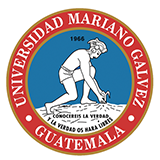
Mariano Galvez University of Guatemala
-
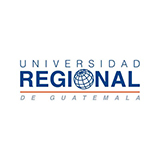
Regional University of Guatemala
-
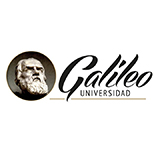
Galileo University
-
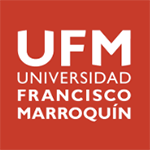
Francisco Marroquín University
-

Rafael Landívar University
-
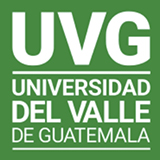
University of the Valley of Guatemala
-
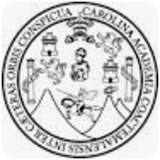
University of San Carlos of Guatemala
-

Technological Institute of Tlaxcala Plateau
-

Golfo University
-
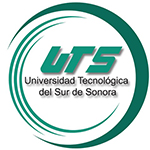
Technological University of South Sonora
-
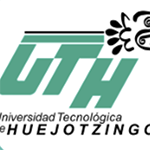
Technological University of Huejotzingo
-
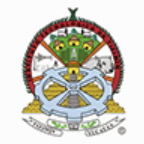
Tizimín Institute of Technology
-
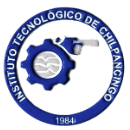
Chilpancingo Institute of Technology

